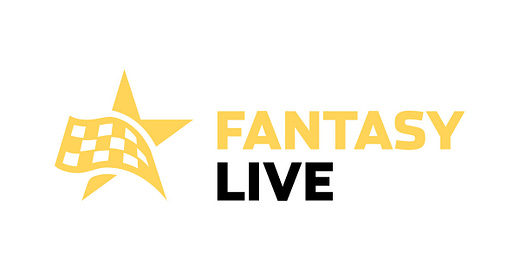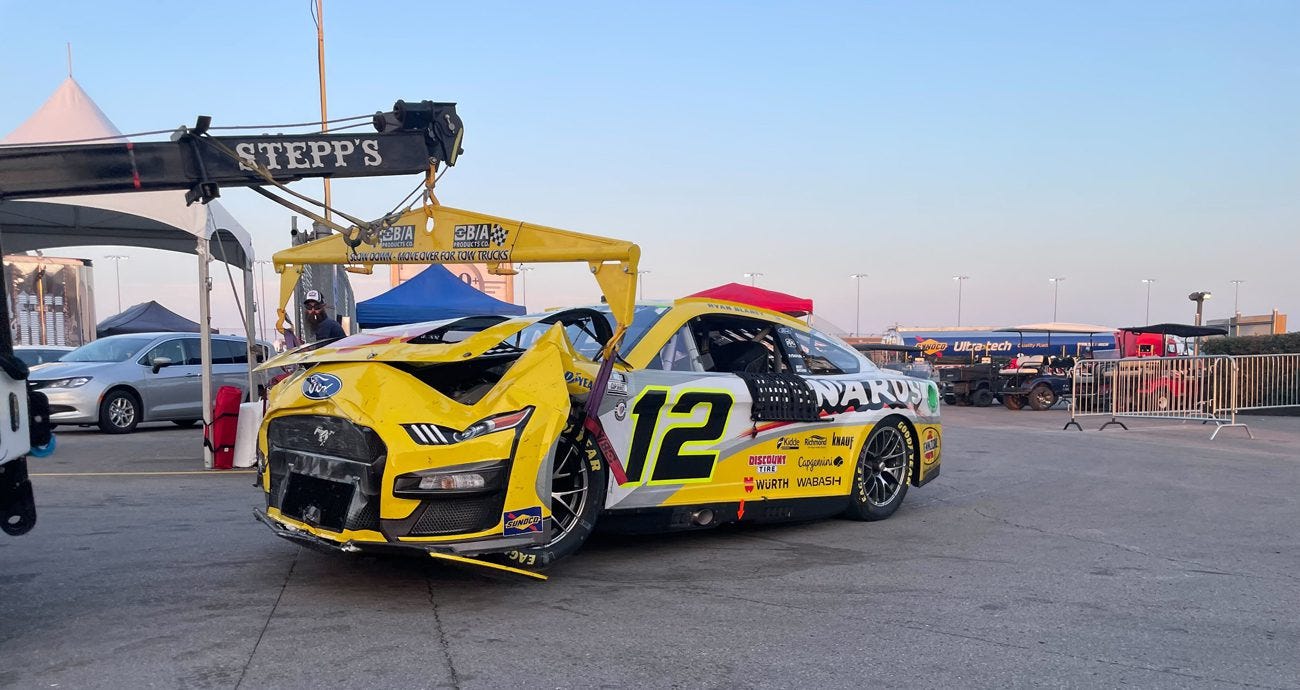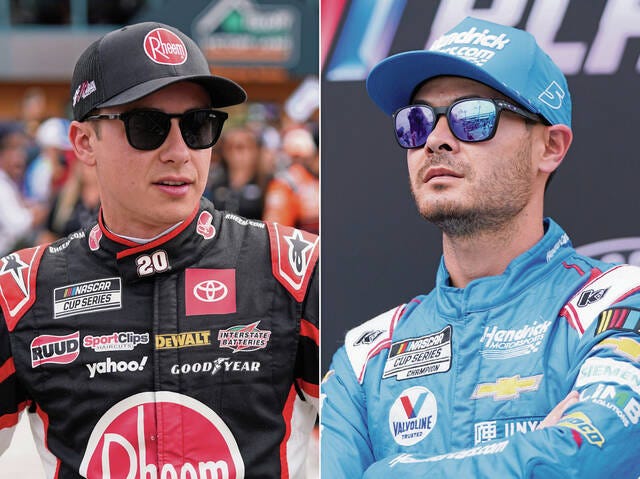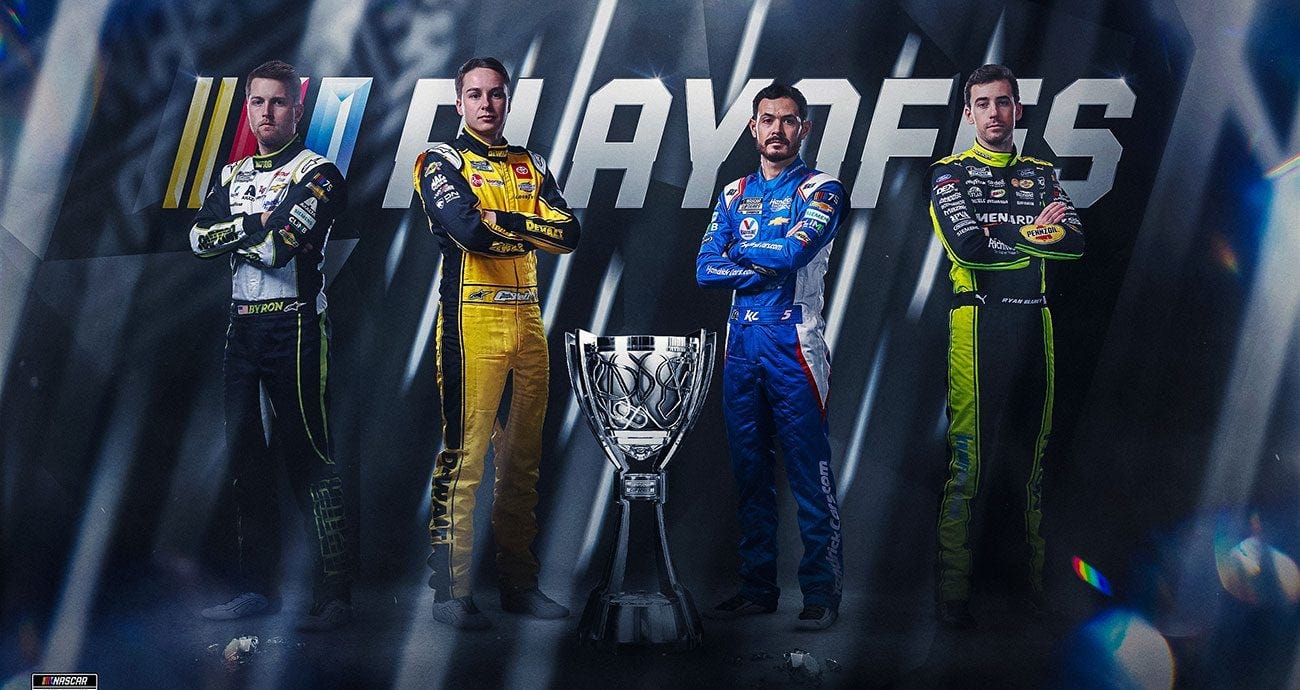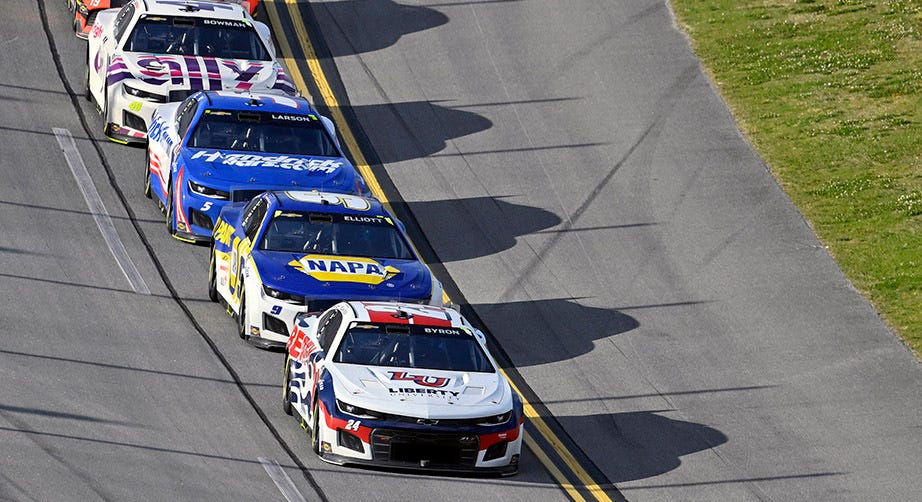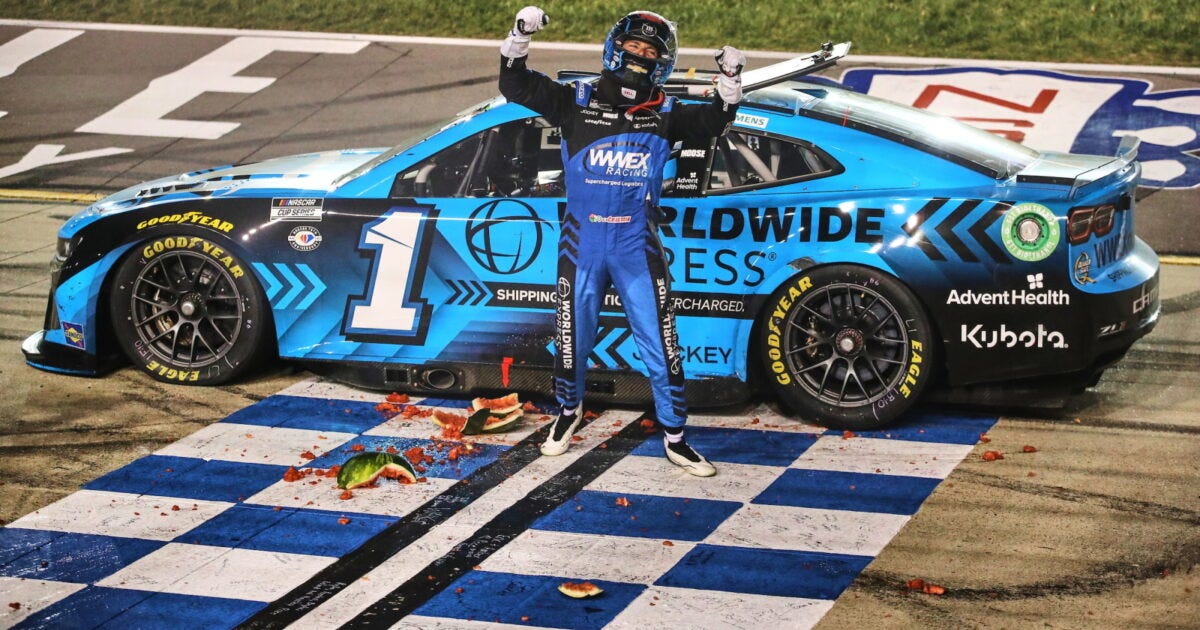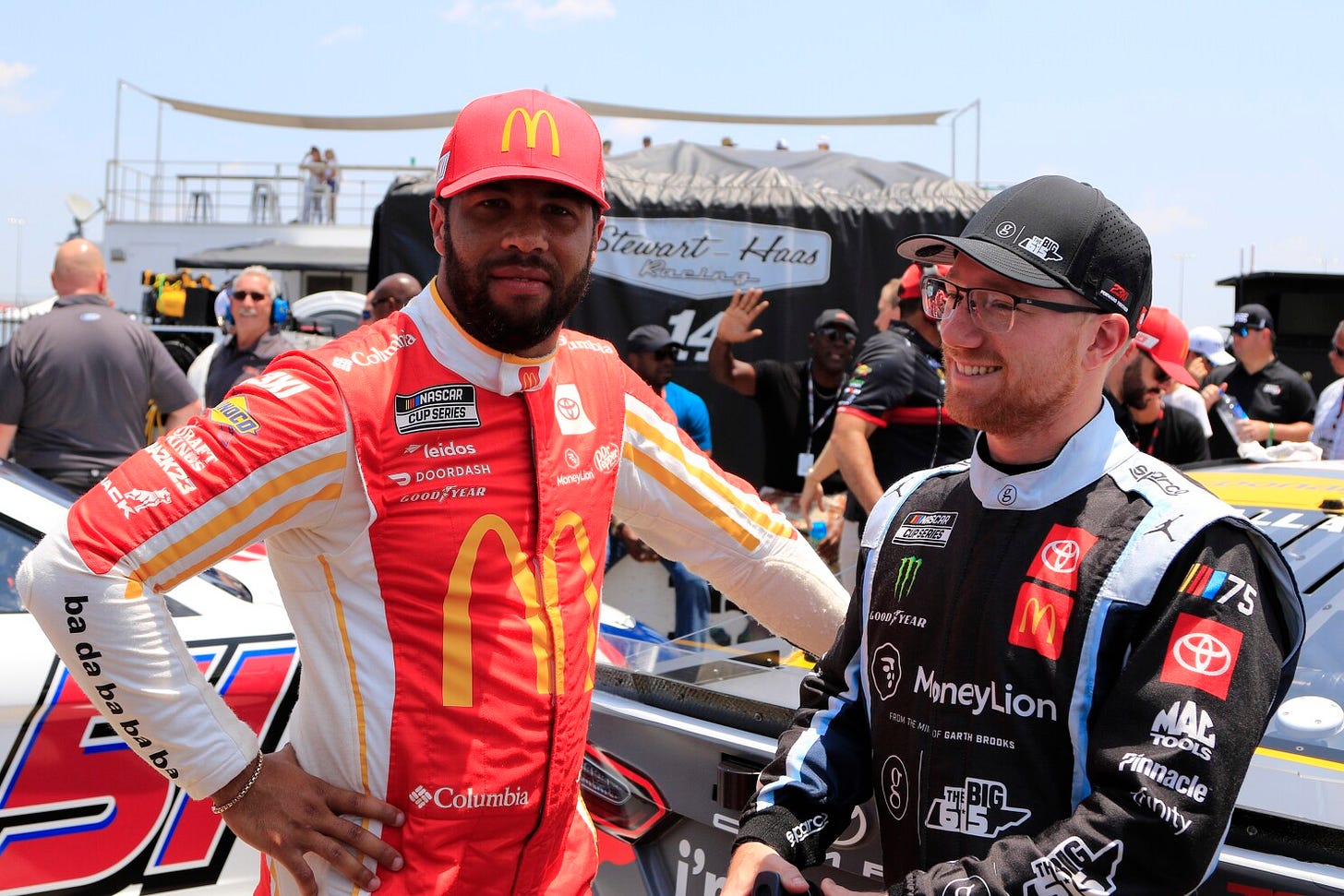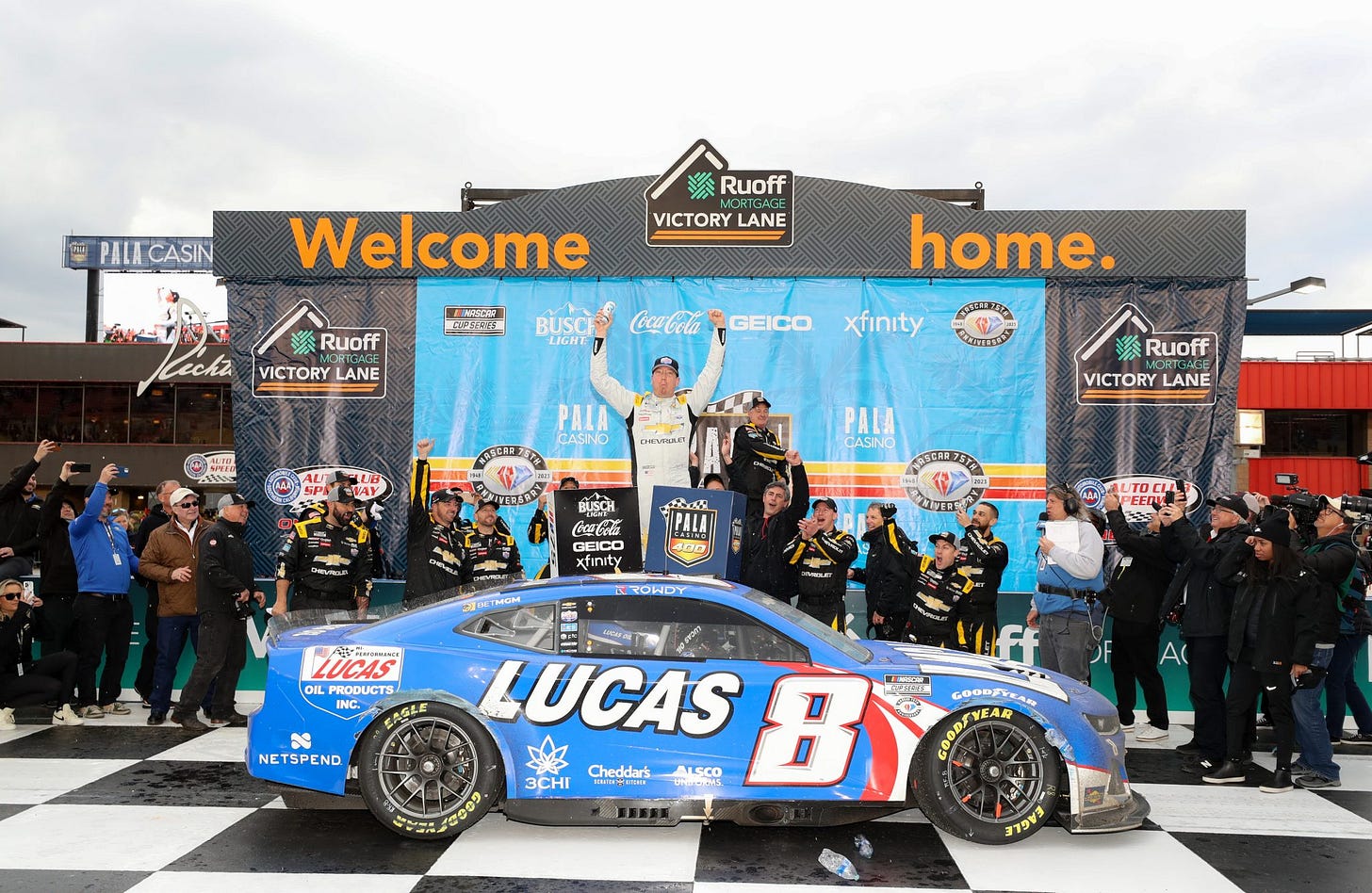After months of the offseason, we finally have cars on track for the Daytona 500. That also means week one out of 36 for NASCAR Fantasy Live
If you're new to NASCAR or NASCAR fantasy - NASCAR Fantasy Live is the way to go; the official fantasy game of NASCAR. In Fantasy Live you pick the drivers you think will score the most fantasy points each week. There are also bonus points for picking the higher finishing position between two drivers. It’s free to play and you can join leagues competing against your friends and other fans alike.
What is NASCAR Fantasy Live?
NASCAR Fantasy Live is held on NASCAR.com. You can create up to 5 entries per account and can join 5 different leagues with each entry.
The format of NASCAR Fantasy Live:
36 weeks
You start five drivers, and one in the garage (a backup driver)
Earn bonus points in four head-to-head matchups. (10 points each)
You can start each driver a maximum of ten times in the regular season, five times in the playoffs
An important note: the 10 starts are only for the 26 regular season races and do not carry over to when it resets to 5 for the playoffs aka the last 10 races. The drivers in your lineup the week before will carry over each week, until you change your lineup, or the 10 uses run out.
NASCAR Fantasy Live Scoring
Just like DFS, you get points from the finish position of each driver and whether or not they score stage points in stage one, stage two, or both. The maximum points a driver can score is 60 by finishing 1st and winning both stages which is 40 +(10x2)= 60. There are no negative points for wrecking out of a race (DNF) or getting disqualified (DSQ).
Garage driver
The one garage driver is there if one of your five starters wrecks, but if one of your five starters has a worse points day than the garage driver you can swap them in to earn more points. The garage driver will not accumulate points and does not count as a use. You have until the end of stage two to swap out one of your five starters for the garage driver.
Bonus points
For bonus points, you pick whoever you think finishes higher in each head-to-head matchup to earn 10 points for each matchup. There are only four matchups a week and in total you can earn an additional 40 points added to the total of the five drivers you start. The matchups picks do not carry over and must be made each week to earn points.
New change for 2024
In previous years, the Championship 4 drivers would not be awarded stage points in the game and in real life. For 2024, the championship 4 guys will be awarded stage points in the game but not in real life.
Strategy
In total, for the regular season, you will need 130 starts, and for the post-season 50. The number of drivers that should be used up in starts for a season is 12-14. This means around 140 starts if you use up to 14 drivers which is more than you need.
Teams/drivers
So how should you allocate them? First, you have to figure out who are these 12-14 guys. These 14 drivers were the best 14 out of 15 drivers based on average finish in 2023, which made more than 15 starts, as well as being the fastest 14 out of the 16 based on 2022-2023 next-gen speed.
Hendrick Motorsports
5- Kyle Larson
9- Chase Elliott
24- William Byron
Joe Gibbs Racing
11- Denny Hamlin
19- Martin Truex Jr.
20- Christopher Bell
Trackhouse Racing
1- Ross Chastain
Roush Fenway Keselowski Racing
6- Brad Keselowski
17- Chris Buescher
23XI Racing
23- Bubba Wallace
45- Tyler Reddick
Penske Racing
12- Ryan Blaney
22- Joey Logano
Richard Childress Racing
8- Kyle Busch
Next is figuring out how to allocate them.
Driver Allocation
Here are a few tips on determining how to allocate the drivers:
1. Pay attention to how the driver is performing at certain tracks in the past and what their speed is like currently.
This can be done by looking at speed stats and analysis on NASCAR, ifantasyrace, WintheRace, and the RaceSheets (join today and save 20%). Looking at history is another way to understand who to use at certain tracks. One caution when using history is to not use too old of history especially when using data before 2022. It is less useful in a way to use the history of the old car ( Gen 6/7, 2013-2022) but I would put more emphasis on 2022-2023 data. Using history and their current speed/momentum is a good mix between past statics and current form to determine where to use drivers.
2. Track drivers to use in future races.
With this tip, it’s best to use a spreadsheet and a counter within the spreadsheet to make sure you don’t go over the 10-use limit in the regular season. With this method, always remember to update your sheet constantly, and don’t be afraid to pivot to other drivers within the best 14 drivers or even those outside of the best 14.
3. Keep an eye on alternative drivers to use.
Not every race you will have to fill all six slots with the best 14 drivers. There are also other drivers in competitive rides that you can fit within your lineup. Such as 48- Alex Bowman, 43- Erik Jones, 54- Ty Gibbs, 99- Daniel Suarez, and 34- Michael McDowell.
4. Study up on the different track types.
There are six track types: short tracks, intermediates (one mile or less), intermediates (1.5 mile), intermediates (2-2.5 mile), Superspeedways, and road courses. The tracks where you can save uses and pivot to other drivers will be superspeedways and road courses; superspeedways because it is mostly a luck race and whoever can work with their teammates or manufacture teammates to stay up front. Road courses are a different skill set than driving on an oval and many drivers have a background or a specialty at driving at road courses.
Andrew Yu is a writer for the RaceSheetsDFS Substack covering NASCAR Fantasy Live. You can catch his weekly picks here and talk about each week’s game over in the RaceSheetsDFS Discord where Andrew has a dedicated channel for NASCAR Fantasy Live.

